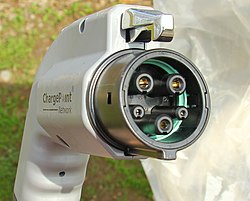Have had the FFE for two weeks now and charging off 110 has been tough.
I purchased a Schneider charger from Home Depot for $750. My friend installed it in about an 1-1/2 hours. That included a trip to Home Depot to get different breakers. I added it right on the other side m the main box, so it was pretty easy. Parts were about $50 - the charger did not come with a 220v cable, and although he would not take any money I gave him $60. The charger is pretty basic, although you can set a delay charge in hour increments. But since MyFordMobile allows for greater control there was no reason to buy a charger with a lot of features. My next billing cycle I will change from a pay per usage rate, to a time of use rate. So charging up at night will only be at 0.14/kw.
I purchased a Schneider charger from Home Depot for $750. My friend installed it in about an 1-1/2 hours. That included a trip to Home Depot to get different breakers. I added it right on the other side m the main box, so it was pretty easy. Parts were about $50 - the charger did not come with a 220v cable, and although he would not take any money I gave him $60. The charger is pretty basic, although you can set a delay charge in hour increments. But since MyFordMobile allows for greater control there was no reason to buy a charger with a lot of features. My next billing cycle I will change from a pay per usage rate, to a time of use rate. So charging up at night will only be at 0.14/kw.

